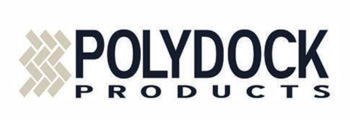Aug 21, 2018
Boat Carpet Care
Boat carpet takes a terrific beating every year. Extreme moisture, sand, stones, harsh UV rays, etc. If you’re reading this post you have a
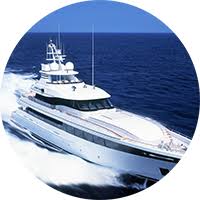
Big Boat
OR a
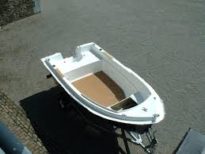
Small Boat
and you want to know how to keep the boat carpet clean. Keep on reading.
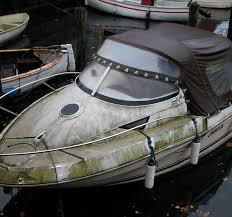
Is this your boat? Imagine what the carpet looks like.
Do’s and Don’ts for Boat Carpet Care
- Regularly vacuum and hose off your boat carpet to prevent staining.
- If there’s a spill, clean it up right away!
- Allow the carpet to dry thoroughly
Do NOT:
- Fold your carpet.
- Roll or store your carpet while wet. This will result in mold & mildew.
Boat Carpet Cleaning Tips
#1:
Start with the basics. Using plain vinegar and water is an ageless trick. Mix around 40 ounces of white vinegar to 1 gallon of water. Spray on the soiled area and let it soak until the area is saturated. Using a medium bristle brush, scrub the area gently. It’s important to thoroughly rinse the soiled spot and let it dry before using it again.
#2:
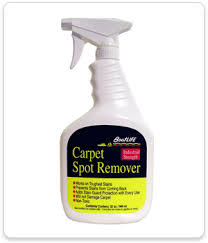
Boat Carpet cleaner
As an alternate use a commercial carpet product for cleaning your boat carpets. It’s best to use a non-foaming
product.
You can even use degreaser for those grease or oil stains as long as it does not have harsh solvents. Make sure to presoak and rinse the carpet thoroughly for the best results. Do not leave a residue as this traps dirt easier.
#3:
Fishermen (or women) will find fish blood to be a difficult stain to remove. However, it’s simple – use cold water and mild dish soap. Apply to the damaged area and let it soak in.
Do not use hot water because it will make the stain permanent. Blot with a towel or a clean sponge. Follow up with a soft-medium bristle brush and scrub after the first or second soaking. Again rinse the area thoroughly and repeat the process until clean.
One More Tip
#4:
Have a carpet that stinks? Baking soda works wonders for removing odors such as a wet dog or that fishy odor. A box of baking soda works great in a closet too.
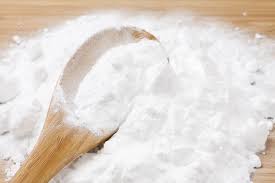
Use Baking soda for a Boat Carpet Cleaner
Baking soda will also assist in eliminating some stains. Lightly mist the carpet first, then sprinkle a generous amount of baking soda over it. The longer you let it sit, the more it will absorb. Allow 3 hours minimum – and it can be left overnight. Be patient, after it’s done its job – merely vacuum it up.
Hint: place a layer of “PRESS N SEAL” over the baking soda to keep the moisture in – it works better that way.
Follow these simple carpet cleaning tips, and your boat carpet will stay fresh and clean for years to come.
Don’t forget to clean it at the end of the boating season.
Where is PWS?
PWS is located in the center of Door County at 7325 St Hwy 57. It is located 1 mile North of County MM (Hwy 42) and South of Sturgeon Bay. Look for the intersection of Idlewild Road.
Want us to address a dock or boat lift topic for you? Feel free to give us a call.
Call Jerry at 920-493-4404 or Email Jerry@wisconsinpws.com for more information.
Aug 7, 2018
Watersports Accessories
Watersports continue to be the most popular summer activity in Wisconsin. They are only exceeded by watching the Packers beat the Bears every year (with apologies to our Chicago friends).
With hundreds of miles of shoreline to enjoy, why wouldn’t it be? Boating, Jet Skis, Kayaking, and Paddleboards are a few of the outdoor activities
we enjoy Spring through Fall in Wisconsin.
With the entire Bay of Green Bay and the many inland shorelines to enjoy we find ourselves with more available activities than time. We can’t get enough of outdoor living.
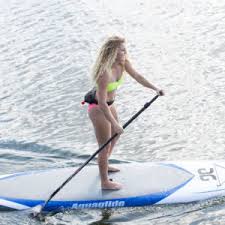
Paddle Boarding
With all of these available activities, you don’t want to waste your time carrying your equipment from the water up to the house or garage. That gets tiring very fast.
PWS and ShoreMaster have simple solutions for you.
Starting with Paddleboards, ShoreMaster has racks that mount on your dock. The racks allow you to secure your equipment safely and conveniently. It’ll be ready for you when you are.
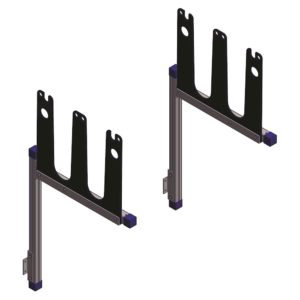
Dual Stand Up Paddle Board Rack
What about my accessories?
What about your life jackets, and other small equipment? PWS has dock boxes which allow you to safely and conveniently store these items with easy access at any time. They come in many sizes and shapes. Don’t forget to have your dimensions handy.
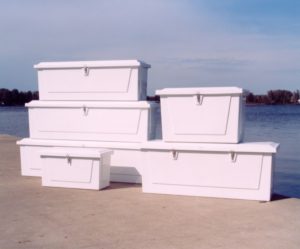
Assorted Dock Boxes
How about the Canoes and Kayaks?
ShoreMaster has single and double Kayak/Canoe racks available. The racks provide convenient storage for your equipment. Nothing could be easier.
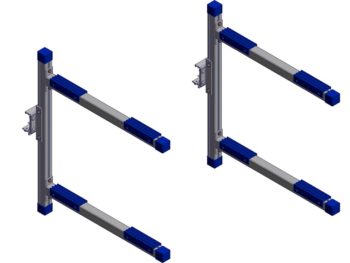
ShoreMaster Kayak Racks
Last, but certainly not least – Jet Skis. Placing them on a trailer everytime you want to go in or out is a real drag. They can’t sit on rocks without damaging the hull.
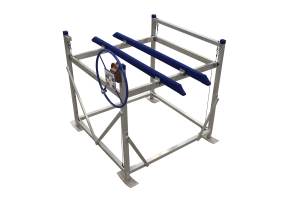
Vertical PWC Lift by ShoreMaster
Even sand can damage the hull or destroy the motor. Don’t forget, you have to get the unit into deeper water to avoid sucking the sand or small pebbles into the engine before you start the engine.
A vertical Jet Ski Lift by ShoreMaster can protect your unit.
Where is PWS?
PWS is located in the center of Door County at 7325 St Hwy 57. It is located 1 mile North of County MM (Hwy 42) and South of Sturgeon Bay. Look for the intersection of Idlewild Road.
Want us to address a dock or boat lift topic for you? Feel free to give us a call.
Call Jerry at 920-493-4404 or Email Jerry@wisconsinpws.com for more information.
Jul 31, 2018
Boat safety
Boat safety should be part of Wisconsin’s three great seasons for boating. Yes, 3 seasons and then comes winter!
Boat SafetyTips

Boat Safety Rule #1- Everyone needs one
- Life Jackets are Mandatory: We all understand that life jackets can save lives. But so many of us don’t bother wearing them when we hit the water. Whether you don’t like the way they feel, or they don’t look cool, life jackets are there for a purpose. Make sure all kids wear their life jackets. A life jacket could easily save your child’s life. Besides – It’s the Law.
- Just like driving a car – Drinking and driving do NOT mix: Have a designated driver if you plan to drink. In Wisconsin boating violations, like drunk driving, count against your driver’s license and your insurance premiums.
- Check Your Lights: Are all of your boat’s lights working correctly? Don’t forget how quickly the sun sets. You don’t want to go back in the dark.
- Watch the Weather: Summer weather in Wisconsin can be unpredictable. Make sure you check the forecast and continue to keep tabs on the weather throughout the day. Don’t get caught in a sudden storm. It only takes about 15 minutes to go from clouds to a violent storm on the Bay.
Avoiding Boating Accidents
Here’s a hard fact: Boating accidents, like failure to yield right of way, to approaching a dock too fast, are all too common. Most of these accidents were avoidable.
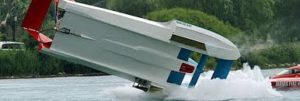
Maybe I should have turned wider
Additionally, 15% of all boating deaths had alcohol involved. Another 83% of drowning victims did not have a PFD.
It’s not a question IF boating accidents are a problem but instead, what can be done to reduce the rate of these accidents?
How You Can Prevent a Boating Accident
- Boating and Booze Do Not Mix: Do not drink and operate your vessel. If you take drinking and driving your car seriously, then the same caution should be exercised on the water.
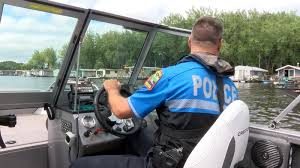
Boat Safety Rule #3- Don’t get a visit from him
Operating a boat while over the alcohol limit is illegal and puts everyone on the water at risk. You have slowed reaction times and a lack of judgment.
- Make PFDs mandatory: So often, an otherwise minimal accident can turn tragic if a passenger falls into the water without it. Remember, they do not have a seatbelt.
Though you may be a good swimmer, there are many ways that you could end up injured and unable to swim. That’s not to mention the possibility of rough waves, which could make swimming back to your boat impossible.
- Follow posted speed and wake limits and stay vigilant for risks.
Like car accidents, some things are out of your control. However, boating accidents are minimized if boaters simply:
- Stay sober behind the wheel,
- Wear PFDs,
- Follow speed and wake limits, and
- Brush up on the essential safety standards of operation.
Is a Boat Safety Course for you?
If you’re a new boater, boating safety courses are a no-brainer. Here are some take-homes you will learn:
- Boat Operation: There are some easily overlooked best practices that can help you avoid collisions, run aground or otherwise damage your boat.
- Emergency Procedures: From fires to dangerous weather, when you’re facing an emergency on the water, every second counts.
- Navigation: Even if you know your favorite boating spot like the back of your hand, there are too many variables to go without trip planning and preparation. These classes can teach you the safest ways to plan your next boating trip.
- Equipment: Even the safest boaters should know what equipment could save their lives in emergency situations. Ensure that all of your safety equipment is up to the task of keeping you and yours out of danger.
- Emergency Cut-Off Switch: If you go overboard, the last thing you want to see is your boat speeding away from you – especially if you aren’t wearing your PFD. Use a kill switch/emergency or cut-off switch fastened to your clothing. This ensures that the engine will shut off if you find yourself thrown into the water. It’s much like the shutoff switch on a treadmill at the gym.
- Keep Contact: Keep others informed about your boating plans. Let them know where you are going, especially if boating alone. Always keep a VHF radio on you, as well as your cell phone, safely stored in a waterproof container.
Boating safety classes will teach you the right procedure for most critical situations you may encounter while boating.
Practice boat safety and enjoy the ride.
Reminder
PWS is located in the center of Door County at 7325 St Hwy 57. It is located 1 mile North of County MM (Hwy 42) and South of Sturgeon Bay. Look for the intersection of Idlewild Road.
Want us to address a dock or boat lift topic for you? Feel free to give us a call.
Call Jerry at 920-493-4404 or Email Jerry@wisconsinpws.com for more information.
Jul 24, 2018
BoatLift Safety Reminders
BoatLift Safety requires constant vigilance. No one can predict when a cable will snap, or when lightning will occur. Children’s safety is paramount whenever they are near a boatlift. This article originally appeared on the Davit Master web site.
This information is important and is well worth reviewing again.
WARNING
BOATLIFTS WITH REMOTE CONTROL SYSTEMS
Turn off the power source on A.C. Powered Units (Electrical Breaker) to the lift when not in use. This prevents any outside sources or accidental transmissions from activating the boat lift/remote control system.
WARNING
ELEVATOR BOATLIFTS WITH TRACKS IN THE WATER
Turn off the power source (Electrical Breaker) to the lift when not in use A.C. Powered units.
WARNING
ALL BOATLIFTS
- BoatLifts are for use by adults only.
- Keep hands and clothing away from all moving parts.
- BoatLifts are not designed for lifting humans.
- Never ride on the boat when lifting or lowering the boat.
- Do not exceed the factory recommended load capacity of the lift.
- Make sure no persons are under, near or on the lift during operation.
- Do not allow the boat to fill with water.
- Do not power your boat onto the lift.
- Always turn the power source off to your lift when servicing your boat or lift.
- Do not swim in the area of the Boat Lift.
- BoatLifts are heavy equipment and should be treated as such
- Inspect your cables once a month.
- Lubricate your cables monthly with penetrating oil.
- Replace cables that are frayed or rusted.
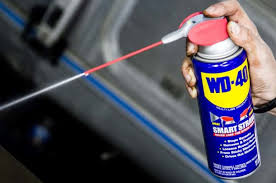
Boat Lift Cable Lubricant
Just a reminder:
For those who consider the current heat wave as unbearable – this is what the outdoors looked like a mere 70 days ago –
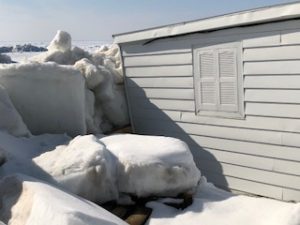
2018 Arrowhead Beach – Crushing a boathouse
Where is PWS?
PWS is located in the center of Door County at 7325 St Hwy 57. It is located 1 mile North of County MM (Hwy 42) and South of Sturgeon Bay. Look for the intersection of Idlewild Road.
Want us to address a dock or boat lift topic for you? Feel free to give us a call.
Call Jerry at 920-493-4404 or Email Jerry@wisconsinpws.com for more information.
Jul 17, 2018
Nothing lasts forever – including boat lift cables
Boat Lift cable problems require a thorough explanation.
There are two types of normal cable wear:
- Internal cable abrasion- This occurs whenever strands work against each other under load.
- External abrasion – This will occur when the cable bends around the winch drum and rubs against the adjoining cable wrap. It also occurs when the cable rubs against the side of the winch drum
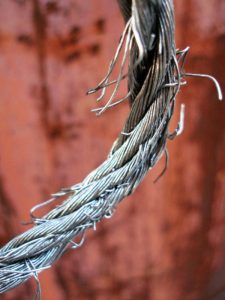
Frayed Boat Lift Cable
Types of Steel used as a Boat Lift Cable
Galvanized Steel: Galvanized steel is carbon steel made corrosion resistant by the application of a thin layer of zinc oxide. A “hot dip” in a molten zinc bath results in galvanizing the cable. The process applies a thin layer or coating of zinc to the steel to increase the metal’s resistance to corrosion.
Galvanized steel is less expensive than stainless steel due to the differences in the processing of each. Galvanized steel is stronger than stainless steel. The downside to galvanized steel is the fact that it has a higher electron-potential than stainless steel, making its’ corrosion resistance less effective because it does NOT regenerate when damaged.
Stainless Steel: Stainless steel is carbon steel which is mixed with about 10% chromium to resist oxidation or corrosion. The chromium forms a chromium oxide layer that promotes resistance to corrosion. When exposed to oxygen the protective coating WILL regenerate. The anti-corrosion of the chromium merely needs oxygen to maintain this property of resistance.
All Lift Cables Will Require some Maintenance
The winch and lift cables require periodic attention. Remember, these (2) items do all the “work” on your lift. They do the lifting of the rack assembly with the weight of the entire boat and motor on it.
Boat lift cables are manufactured out of either stainless or galvanized steel.
Galvanized cable is used as the winch cable on heavy boats. Stainless steel cables are used for the remaining cables on top brands like ShoreMaster.
Both types of steel offer the benefit of corrosion resistance and strength. However, watch for the noteworthy differences mentioned above that require your attention.
Corrosion
Galvanized cables that break usually show signs of corrosion or rust in advance. Typically, the failure is located near the winch when the rack is in a lowered position. Another common site for corrosion is at the bottom of the cable where it secures to the frame on some brands.
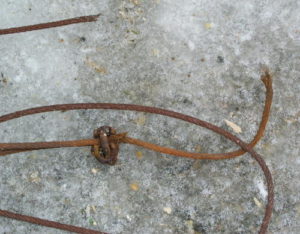
Rusted Boat Lift Cable
A slight discoloration indicates that the protective galvanizing coating may have worn away. Heavy concentrations of rust indicate that the steel cable is losing strength and requires replacement immediately.
How long should a cable last?
Experts claim galvanized cables require replacement every two years. All things being equal, a stainless cable will last up to twice as long.
A point often overlooked – internal abrasion or rust is hidden and may not show external damage on the cable during a visual inspection. A boat lift cable like this may sometimes fail without prior warning.
Other causes of cable failure
An improperly positioned boat puts extra strain on any boat lift cable. Wave action pounding against the boat hull or jamming the rack against the frame may send your boat into the water with a corroded or damaged cable. Even a new cable may “snap” if you jam the rack against the frame.
When in doubt, replace the cable; trying to squeeze another year out of a $95 cable that you know s damaged or rusting isn’t worth the risk.
In Conclusion… What Can You Do For Your Boat Lift Cable?
- In spring and fall put a short blast or two of PENETRATING OIL on the cables. Spray the cables wrapped around the winch drum from the top of the winch. Do not soak the cable; you’ll only contaminate the water. Use only penetrating oil. A quick spray during the summer is very helpful.
- NEVER USE GREASE to lubricate the cables. (grease traps the moisture inside the cable accelerating its deterioration).
- Inspect cables for frays and rust – Caution – wear leather gloves to prevent injury to your hands. Check near the top of the winch cable as this is the most common area for frays. Replace as needed.
- Check all cables to assure correct alignment on the rack pulleys.
- With your boat correctly positioned on the lift, check for any slack in the cables. All cables should be equal in tension. Contact PWS for adjustment, if needed.
- Look for cable corrosion near the winch with the rack all the way down. Maintain weight on the rack to assure proper tension on the cables.
We hope that this article will make your life easier and lend more confidence to your selections. Your boat lift is an investment, and as such we want to help you make wise decisions.
Reminder
PWS is located in the center of Door County at 7325 St Hwy 57. It is located 1 mile North of County MM (Hwy 42) and South of Sturgeon Bay. Look for the intersection of Idlewild Road.
Want us to address a dock or boat lift topic for you? Feel free to give us a call.
Call Jerry at 920-493-4404 or Email Jerry@wisconsinpws.com for more information.




















